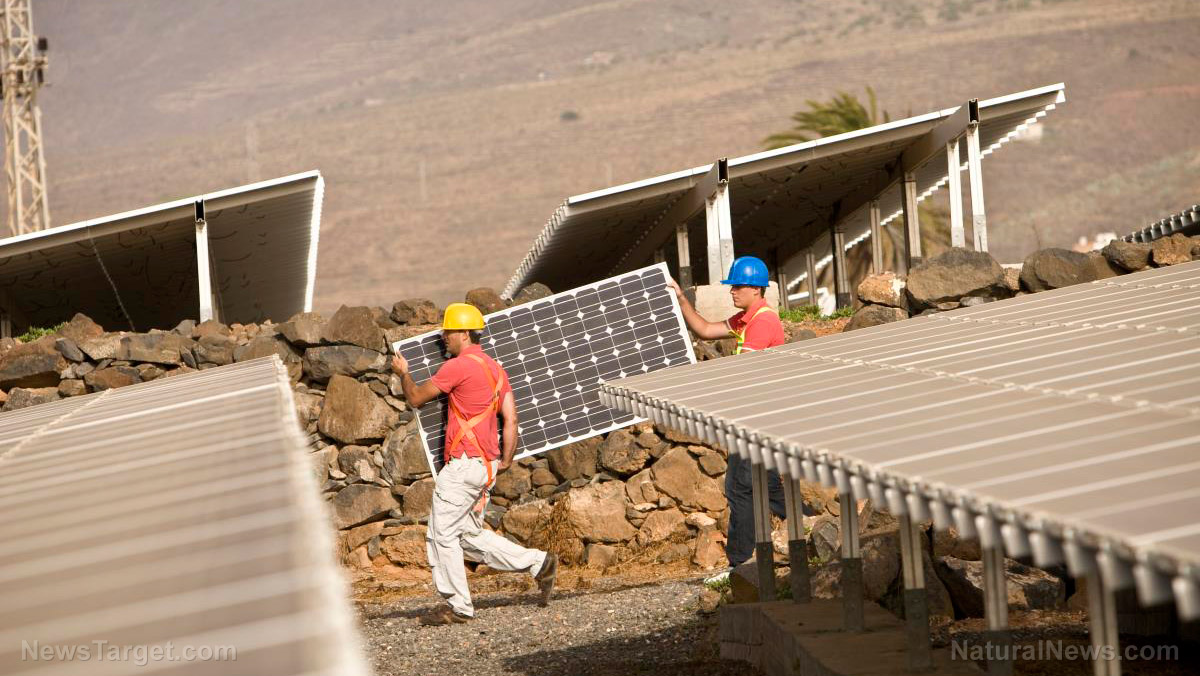Installing solar panels over canals could save California 65 billion gallons of water a year, researcher claims
06/07/2021 / By Virgilio Marin

Brandi McKuin of the University of California, Santa Cruz claims that covering California’s canals with solar panels can save the drought-prone state around 65 billion gallons of water every year.
She explained that canopies of solar panels would provide shade to the canal water during the summer months. This, in turn, would save enough water to irrigate 50,000 acres of farmland or meet the residential water needs of over two million people, she said.
This came as California is currently experiencing widespread water shortages and dry conditions. Already, the state’s 154 major reservoirs are collectively at 71 percent of where they typically are on average. Federal climate analysts from the National Integrated Drought Information System called the outlook for California’s reservoir levels recovery “grim” in their most recent report.
“Water scarcity is a big concern for our state, especially when we have frequent droughts,” McKuin said.
She added that water conservation is critical because droughts in the state are expected to get worse. To that end, she recommended assessing the feasibility of installing solar panels over California’s canals.
India’s canal-top solar power plant
Solar-covered canals are currently in use in India, with the state of Gujarat being the first in the country to cover its canals with solar panels. The state launched a pilot project in 2012 that installed solar panels atop a 2,460-foot stretch of irrigation canal. Three years later, the first large-scale canal-top solar power plant was built over the canals that feed into the Narmada River in the state’s Vadodara district.

Manik Jolly, CEO of Grassroots and Rural Innovative Development, who was involved in the pilot project, said that the energy generated from the solar canals could provide electricity to farmers during the energy-intensive irrigation season. In addition, the power generated could be fed into the state grid, sold to distribution companies or used by the canal authority.
Pundits said that installing solar panels over canals and other waterways benefits both the installation and the water beneath it. The running water keeps solar panels cool, which increases their efficiency to at least 2.5 percent. At the same time, the solar panels minimize the evaporation of water. That is important for states like Gujarat, where canals are mainly used for irrigation and evaporation is a big problem, said Pulkit Dhingra, founding director of Ahmedabad-based AHA Solar Photovoltaics.
Disadvantages of installing solar panels over canals
Installing solar panels over waterways has a lot of drawbacks as well. Canal-top solar plants are more expensive to build than normal solar plants. For one, the structure supporting the panels have to be galvanized with a protective zinc layer because the water below can corrode metal.
Finding the right location is also a challenge since the width of the canal has to be just right, Dhingra said. If the canal is too wide, the installation becomes doubly difficult and expensive to construct. If it’s too narrow, the panels that can be installed are too few to generate enough energy. Moreover, the canal has to be long enough to accommodate the planned solar structure.
Like solar panels placed on land or rooftops, canal-top solar panels have to be cleaned regularly to maintain their efficiency. But operating and maintaining canal-top power plants can be challenging and expensive because ramps have to be built to enable cleaning, Jolly said. (Related: Solar power costs up to 3x as much as fossil fuels, nuclear and wind power.)
Security is also major issue, according to Payal Saxena of Ahmedabad-based consultancy firm Gensol Engineering. “Because canal-top plants are spread over large areas and cannot be protected by boundary walls or fencing, security concerns are major. Cameras may have to be installed to monitor pilferage,” Saxena said.
There are plenty of other problems. Solar panels should face south to maximize the absorption of solar energy but most canals’ direction could not be dictated. In addition, solar panels act as an obstruction to canal repair and silt removal. Installing them also requires cutting down trees along the canals since the area needs to be shadow-free.
Learn more about the disadvantages of solar power plants at SolarTechReview.com.
Sources include:
Tagged Under: agriculture, California, canal-top solar power plant, clean water, Drought, electricity, energy, environment, fresh water, future tech, India, irrigation, renewable energy, solar energy, solar panels, solar power, solar power plants, water, water conservation, water scarcity, water shortages, water supply





















